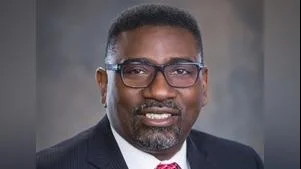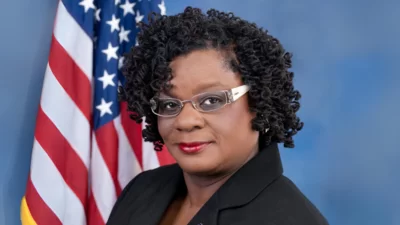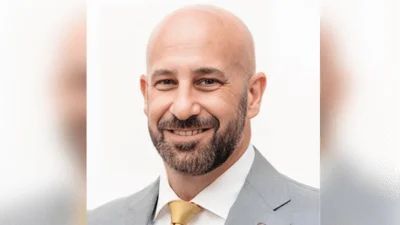Milwaukee City | Flickr by Ken Lund
Milwaukee City | Flickr by Ken Lund
One of the nation’s most influential businesses in healthcare application integration protocols is headquartered in Grafton.
HealthLX, founded in 2014 by CEO Will Tesch, is at the forefront of developing Fast Healthcare Interoperability Resources (FHIR). FHIR are international standardization guidelines designed to enable health data, including clinical and administrative data, to be quickly and efficiently exchanged between software platforms.
“The biggest and ugliest challenges in the maturity of how technology evolves is tied to how systems talk to each other,” Tesch explained. “It doesn’t matter if it’s 2022 or 1982. That is fundamentally the challenge you have. Human beings build stuff all over the place, all with certain purposes and needs, but sometimes they have to get outside their system to talk to another system. In that layer of technology challenge, the healthcare industry calls it interoperability, every other industry calls it integration.”
HealthLX has its origins in TESCHGlobal. Tesch, a lifelong technology enthusiast with a strong history as a business leader, launched the technology consulting business in 2005. The company provides data management, managed services, and software development services for an international clientele.
Increasingly, TESCHGlobal clients in the healthcare industry hired the company to meet the emerging software compliance standards being developed by Health Level Seven International (HL7). The organization is “dedicated to providing a comprehensive framework and related standards for the exchange, integration, sharing and retrieval of electronic health information that supports clinical practice and the management, delivery and evaluation of health services.”
To help better meet the demand of the industry, Tesch created a new company devoted to addressing these needs. The spun-out company is HealthLX (Healthcare Language Exchange), a health tech company focused on solving interoperability and data exchange for payers, providers, and Healthcare Information Technology (HIT) vendors.
“Application integration fits my personality, to some degree. It’s the hardest and most challenging area of tech. It’s the interoperability or integration between two systems and is in the background. People don’t talk about it as much because it’s not sexy, it’s not pretty. It’s not a graphical interface or a user experience, but instead we’re working on the hard stuff behind the eye candy,” Tesch said.
“When I started the firm, I wanted to focus on two areas in particular, using data to make information that’s usable; that’s called enterprise integration, enterprise interoperability, and analytics. One can’t draw conclusions about data unless it is good… We’ve become obsessed with solving ridiculously challenging problems,” he continued.
Many of the challenges faced by the team were the result of a lack of standards governing how healthcare technology is designed.
“The U.S. government does not have technical standards that they mandate very often,” Tesch said. “In healthcare, the only one that’s mandated is EDI X12 for certain EDI transaction sets. That is not going to be that way forever.”
EDI X12 (Electronic Data Interchange) is data format based on ASC X12 standards. It is used to exchange specific data between two or more trading partners.
“With healthcare inside the U.S., we’ve got this love/hate triangle of sorts- the patient, the doctor, and the health plan. The doctors and the health plan by default are juxtaposed. They have different purposes, and they don’t work well together. Therein lies the largest problem we have in our country,” he said.
“The health plan doesn’t talk to the provider, or they don’t agree on much. But they have to agree on much because that’s what we’re paying the health plan for and that’s we’re paying the doctors for, right? But the patient is kind of on the outside looking in,” he continued.
To combat this problem, Tesch and his team have created software that gives patients the ability to access their healthcare data from multiple sources. The product, called Me and My Data, allows patients to carry a shareable version of their full medical history on their phones and laptops.
“This is one of these big ugly problems that needs to be solved. And naturally, being predisposed, (I) want to try to help solve these problems. This is a personal challenge of mine. I think I can encourage others within healthcare to actually fix these data exchange needs, to help the industry, which helps patients- that means us,” Tesch said.
Tesch was right. He and his team could solve these problems.
Not only has HealthLX created a solution for patients to access and share their healthcare data, but the team is also instrumental in the work involved with creating the FHIR standardization in the healthcare industry.
“I’m really proud of what happened. We were getting asked to build functionality on a platform, but I saw an opportunity to create workflow design patterns that we could reuse and could be applied across the industry. The clinical data exchange is a huge deal. What we’ve done, using FHIR as a baseline, and more importantly, the standards body HL7 that defines FHIR and defines how use cases get created- that body, they pay us to write reference code for them,” Tesch said.
“We’re writing data exchange workflows for the country ahead of the regulations. HealthLX is doing that.”
“We don’t celebrate that very much until we’re in a sales cycle, but that’s innovation that we’ve incorporated onto our platform. We’ve done all this standards work and we can incorporate these ideas immediately onto our platform. So, when the industry’s ready to move, they can take advantage of the ideas that are coming out of these really large groups which become mutually agreed requirements and have CMS (Centers for Medicare & Medicaid Services) support” he said.
HealthLX might be reluctant to accept accolades for their work, but it may be time to reconsider that practice. The company’s involvement with HL7 has put the small Grafton-based company at the forefront of the next wave in healthcare technology.
“The work allows us to stand at the leading edge of what the country needs to do into the future and it gives us the opportunity to determine what is best for the future, in terms of engineering design,” Tesch said.
The adoption of technology standards in the field is not moving as quickly as Tesch would like it to. He stresses the need for government enforcement of these standards to motivate companies into compliance. Standardization is not needed merely for technical ease. If healthcare technology databases could transfer data between platforms, the result would be improved patient care across the board.
For Tesch, the mission is a personal one.
“I am very outspoken about the patient advocacy aspect of the mission…I’m going to beat that drum all day long. Both my parents were misdiagnosed with life ending diseases, and that affected their ability to get the care they needed when it would have served them best. Why? Because the industry was in the way. The ego of the industry was in the way. The paper shuffling was in the way. I’ve got to know people on this journey that all have a similar story,” he said.
Tesch understands how healthcare technology affects people’s lives and knows the work of HealthLX will have a lasting impact on patient outcomes. “To leave something behind bigger than what you are is important and feeds an inner-purpose,” he said.
To learn more about this quiet company making big waves in healthcare technology, connect with HealthLX here.
Original source can be found here.






 Alerts Sign-up
Alerts Sign-up